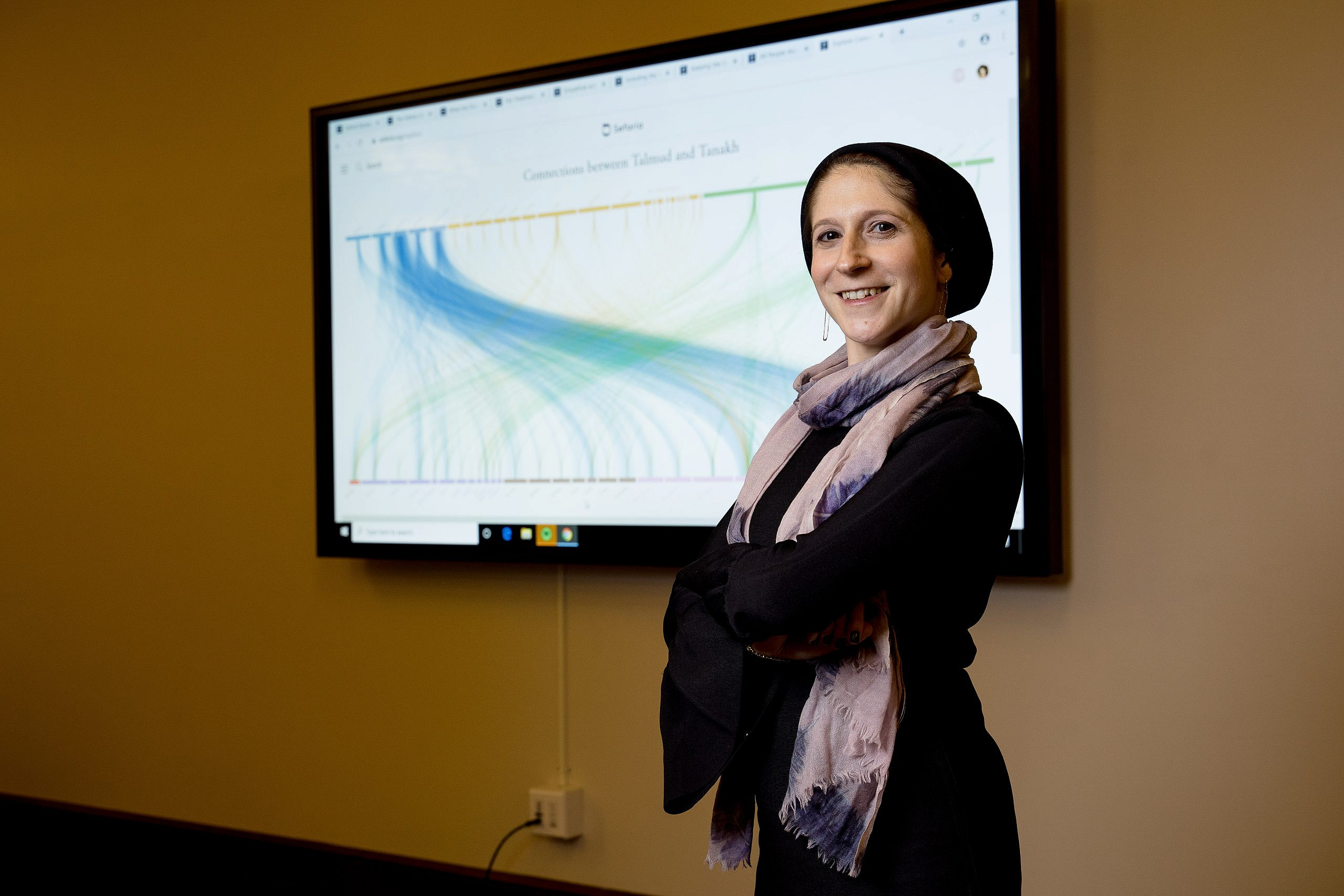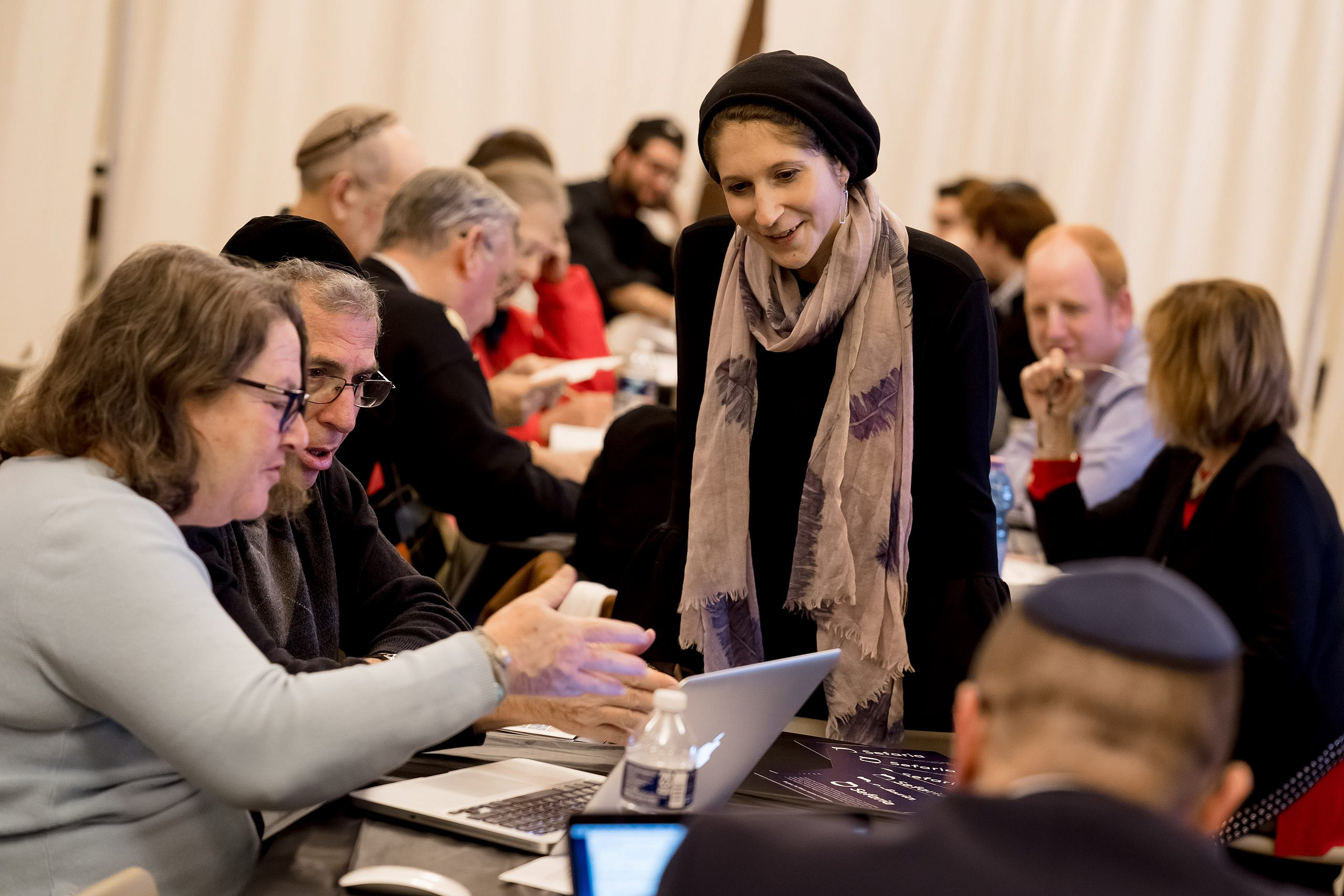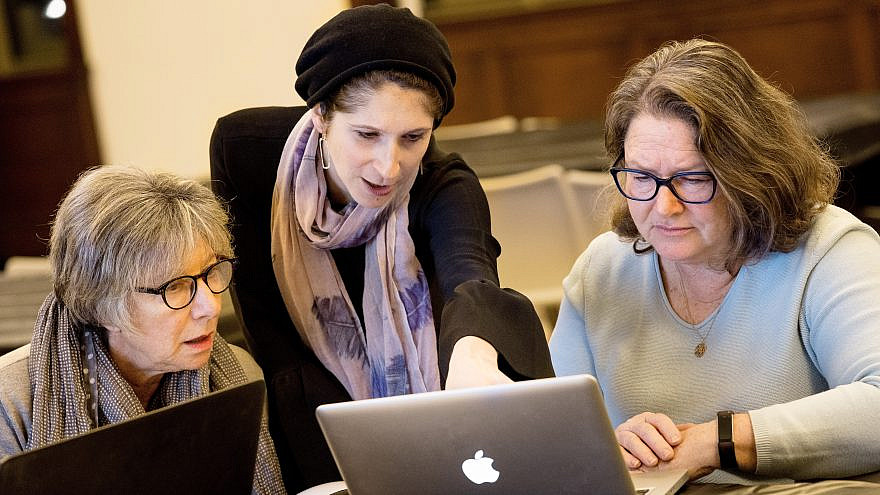It started as an online digital copy of the Hebrew Bible. Today, Sefaria has thousands of biblical and rabbinic texts, which 700,000 people access monthly, according to Sara Wolkenfeld, the nonprofit’s chief learning officer.
Sefaria traces its origins back to 2011, when author Joshua Foer and Brett Lockspeiser, formerly of Google, developed its initial concept. As Sefaria celebrates its “bat mitzvah” year and looks ahead to its “bar mitzvah,” Wolkenfeld told JNS that “Sefaria is everywhere.”“We have several people in California, one person in Berlin and a few in Israel,” said Wolkenfeld, who lives in Chicago’s Lakeview neighborhood.
Prior to joining Sefaria in 2013, when it incorporated as a nonprofit, Wolkenfeld and her husband, Rabbi David Wolkenfeld of Chicago’s Modern Orthodox synagogue Anshe Sholom B’nai Israel, co-directed the Orthodox Union’s Jewish Learning Initiative on Campus at Princeton University for five years.
Following a lecture she delivered on May 2 at a Melton School of Adult Jewish Learning conference in Chicago, she told JNS that during the 2009-10 school year, a Princeton student asked her a question about Jewish views of the afterlife.
“These were extremely smart young people,” she said of the students. “But the problem was they could not access the physical texts themselves because they weren’t fluent enough in Hebrew.”
Lockspeiser and Foer approached her in 2013, and she agreed to join. “Sefaria existed as an idea,” she said of the concept at the time.
Wolkenfeld came aboard as director of education, focusing on outreach to Jewish educators, whom she and the co-founders assumed would be Sefaria’s earliest adopters. She also identified Jewish religious texts to add to the site and secured the permissions necessary to republish the texts that weren’t already in the public domain.
Her responsibilities later broadened to include helping learners of all levels.
In 2013, an average of about 3,000 people visited the site, which had 9.3 million words, monthly. In 2023, monthly visitors climbed to nearly 675,000, and as of March, Sefaria’s library has 322 million words—nearly 76.5 million translated words, 3.3 million intertextual links and nearly 450,000 source sheets.

‘Being used and expanded upon’
Wolkenfeld has found it fulfilling to see how much Sefaria has grown.
“It is incredible to see the adoption of Sefaria throughout the Jewish world. Almost everywhere I go, I see how much it is being used and also expanded upon,” she said.
Sefaria plans to continue expanding its library, while emphasizing accessibility to Jewish texts that speaks to users’ unique needs and questions.
This year, Sefaria debuted a “Word-by-Word” writing project, which will support the Jewish textual research of a cohort of up to 20 Jewish women who are preparing manuscripts for publication.
Another recent development is that Sefaria’s database directly links to the National Library of Israel’s RAMBI repository of articles on Jewish subjects.
Sefaria has also added three kabbalistic works—all connected to the central Aramaic kabbalistic text “Zohar”—to its holdings: a Hebrew translation of “Zohar,” a 20th-century commentary on the work by Rabbi Yehuda Ashlag (known as the Baal Ha-Sulam) and an 18th-century “Zohar” commentary by Moroccan kabbalist Rabbi Shalom Buzaglo.
“In the years to come,” said Wolkenfeld, “we are very excited to experiment with new products of Torah learning in the digital age.”



























